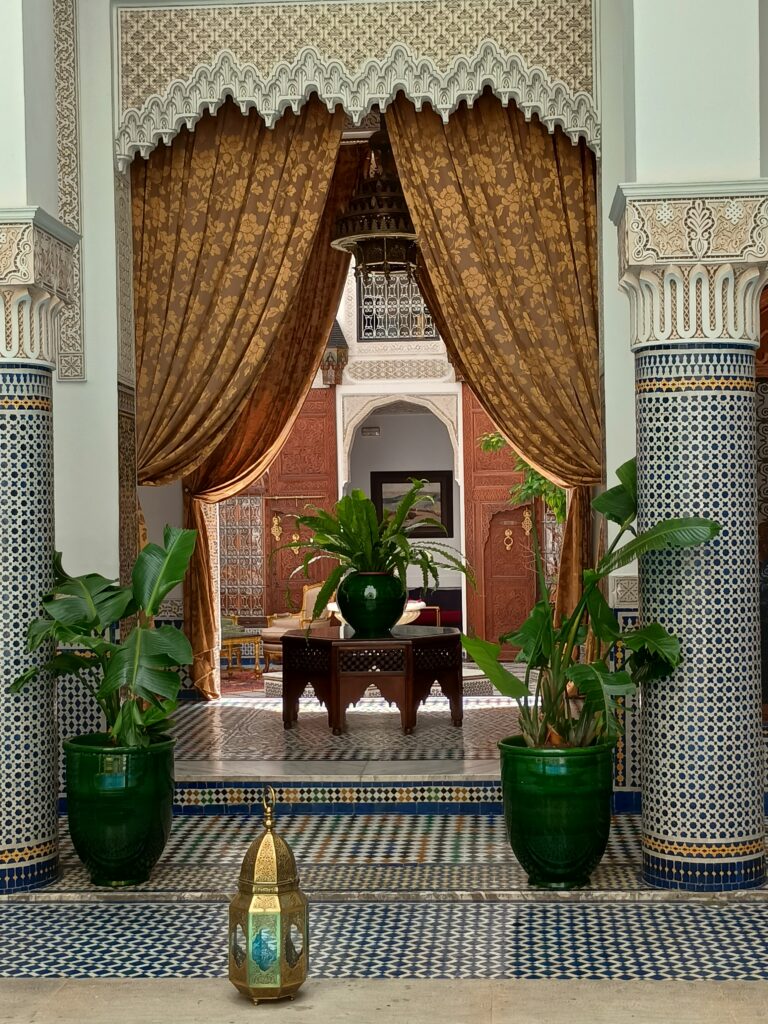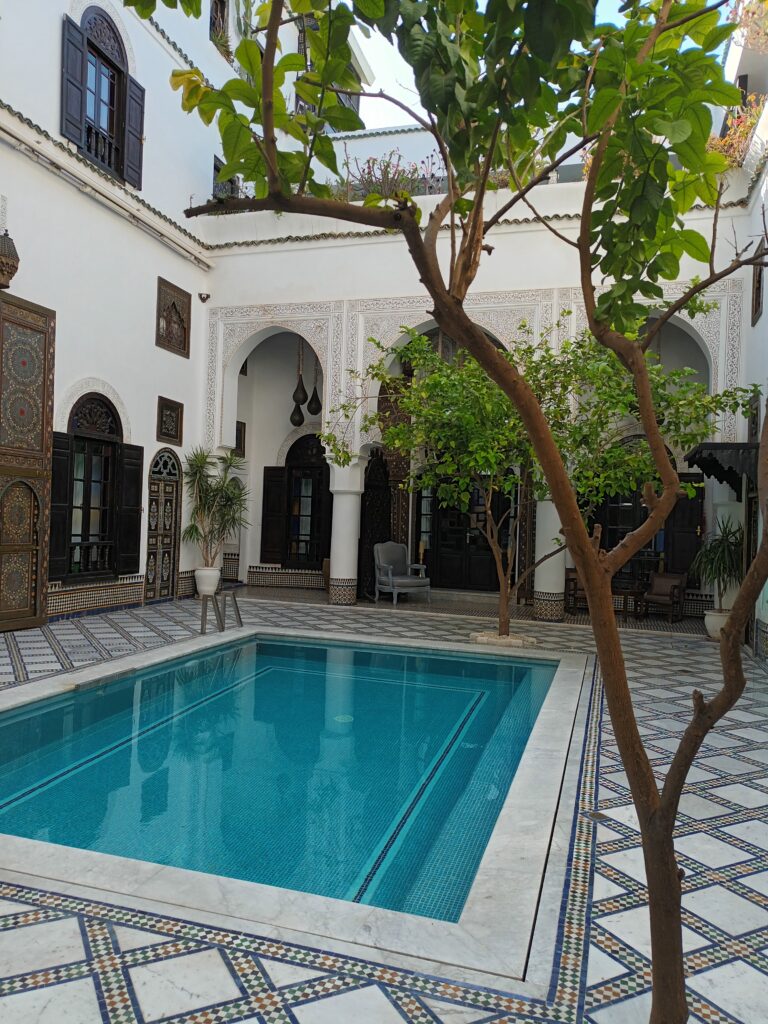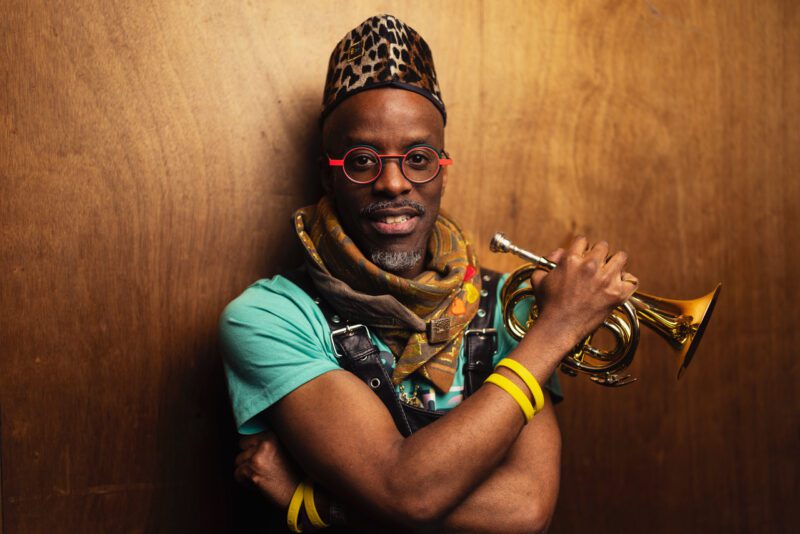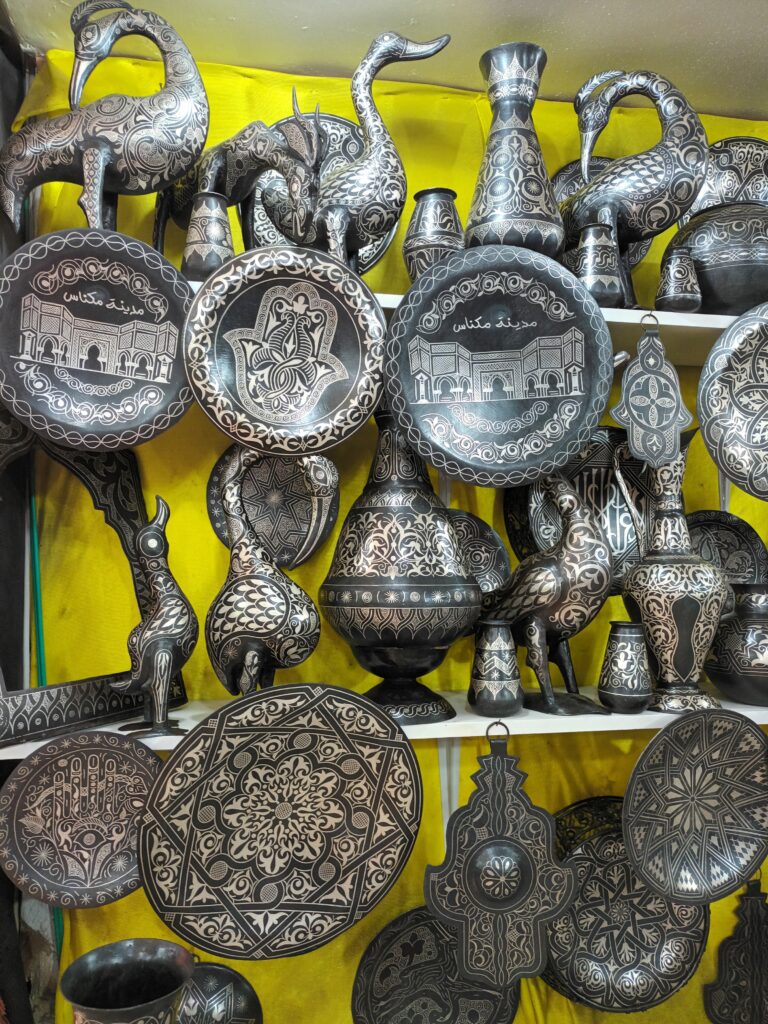CONVENTIONAL hotels go out the window when staying in the ancient city of Fes (aka Fez) in northern Morocco and once the capital of the country. The medieval part of the city, called the ‘Athens of Africa’ because of the importance it attached to architecture and decorative arts, has been superbly well preserved and this is best experienced by staying in a riad.
The word, referring to the architectural form of a home built for wealthy families, comes from the Arabic for ‘garden’, an open-air space making up an interior courtyard around which rooms were constructed. Nowadays, the courtyards have been creatively preserved and enhanced by designers keen to showcase traditional Moroccan arts and crafts. At Riad Maison Bleue, to take a fine example, the courtyard now facilitates a small swimming pool and citrus trees.

Elegeant interiors in the riads of Fes
Fes has thousands of narrow, alley-like streets threading past ochre-coloured, lime-and-sand walls and first impressions after leaving them behind to step into a riad through a nondescript door is sheer wonder: a sudden transformation into a mesmerizing space of dappled light and private splendour.
Essential to the marvel of the riad as pure spectacle is the vibrant mosaic tilework, commissioned by the original homeowners but immensely well preserved and restored across centuries of time. The tilework adorns walls and floors and it displays intricate geometric arrangements of floral motifs and polygons.
Equally splendid are stucco decorations featuring calligraphic motifs and elaborately carved patterns in cedar wood that are found by looking up at the ceilings above you. In a riad like La Maison Bleue, this artistic brilliance is complemented by creature comforts in bedrooms, a spa, hammam and gym as well as a lounge, bar and a fine restaurant.

Lemon tress around the pool in Riad La Maison Bleue’s courtyard
The best riads will also offer cooking classes, usually beginning with a shopping trip to the medina to purchase essential ingredients for a classic Moroccan dish. The country’s cuisine, evolving from Berber, Arabic and Mediterranean influences, features in most restaurants and there is also an evolving wine culture.
This may seem surprising but Morocco is full of surprises and wine production goes back to the the Romans when northern Morocco became one of their far-flung provinces (and then the French, colonizing the country, brought their own viticulture). Any scepticism about the quality of the local wines will be challenged when tasting a white or red from Château Roslane, the first wine estate in North Africa (some 60km south of Fes) to bear an Appellation d’Origine Protégée designation.

Jowee Omicil
I was in Fes for its annual Festival of World Sacred Music, a major event and one far less ethereal than its name might suggest. Stretching over more than a week, programmes are stunningly eclectic and this year it included drummers from Burundi, classical music from Azerbaijan, griot-inspired performances from Mali, Gregorian chants from a Swiss ensemble and – the spellbinding highlight – the virtuosic Jowee Omicil and his band.
He appeared on stage carrying two saxophones, a cornet and a bag of smaller instruments which I couldn’t even identify. Performing their album Spiritual Healing: Bwa Kayiman Freedom Suite, the band blends Afro-Haitian rhythms with contemporary jazz. Like Château Roslane wines, Jowee Omicil’s presence is alive and well in France and Germany but not (yet) in the UK. Omicil’s eagerly awaited new album, sMiLes, is planned for release before the end of this year.

Handcrafted and ready to wear in Fes
Staying in a riad in Fes is a wonderfully quiet experience and the interlacing walkways threading through the city’s historic quarter, the medina, are too narrow for pedestrians to be plagued by armadas of mopeds and the like. Nonetheless, the medina is a bustling affair and sooner or later an escape from urban clamour will beckon.
It takes only 40 minutes on an express train – a little longer by car – to reach Meknes, once also a capital of Morocco. Imposing city walls seem to be everywhere, there are cobbled streets to wander down in the old Jewish quarter (Morocco welcomed Jews when they were expelled from Spain in 1492) and architectural wonders to behold like the Bab Mansour Gate and the Mausoleum of Moulay Ismail.
On the outer reaches of their empire, the Romans built a city, Volubilis, which was later buried by an earthquake and only uncovered in the early 20th century. With its triumphal arch, temple, basilica and well-preserved mosaics, Volubilis is a little-known but unmissable archaeological site and it is only a short distance outside Meknes.

Arsts and crafts in Fes and Meknes
Everyone knows about Marrakech but Fez and Meknes make a remarkable and in many ways more fascinating alternative. They are less hurried places, offering enticing riads, ancient histories brought alive and a music festival of truly world renown.
by Sean Sheehan
See here for some of the architecturally most distinguished riads in Fes and here for Riad Maison Bleue. For listening to Omicil’s Spiritial Healing album, see here. Fes can now be reached on direct flights from London’s Stansted airport and Stansted Express, running every 15 minutes between London Liverpool Street and the airport, can be booked online at www.stanstedexpress.com. Trains between Fes and Meknes can be booked online through www.moroccotrains.com
